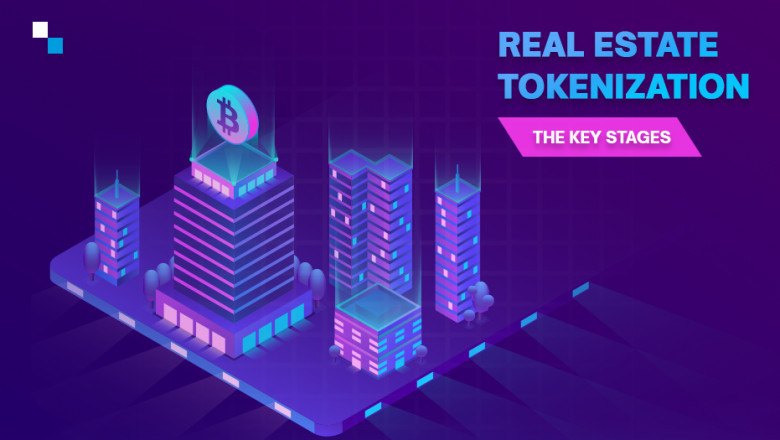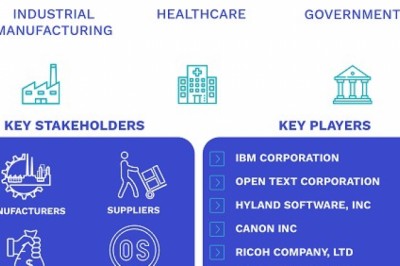views

With the integration of blockchain technology, the Real Estate industry is undergoing a major overhaul. Real estate tokenization on the blockchain has opened up the industry to individuals who have flair for real state business but could not participate in it due to insufficient funds. It has also solved the inherent issues of the industry like lack of transparency, trust, and speed.
What are the different types of real estate tokenization?
The market of digital asset tokenization of real estate properties can be divided into the following types:
- Assets that are securitized on the blockchain: This asset class leads in the securitized blockchain assets in 2022. According to the latest report, almost 89% of all the traded security tokens in 2022 were real estate tokens.
- Assets that are fully tokenized on blockchain: However, these are not actively trading on secondary markets
- Assets that are fully tokenized: These are actively trading on secondary markets.
How do Asset Tokenization Services for real estate work?
Historically speaking, real estate has been one of the most illiquid asset classes. It’s because real estate dealings involve extensive planning, have cost constraints and require a lot of property management effort, and legal prowess.
Digital asset tokenization on blockchain helps overcome all these challenges by following these 5 stages:
Stage #1 Structuring the Deal for smart contracts
In a real estate tokenization asset, the shareholder type and regulations based on jurisdiction play a very crucial role. When the tokenization is carried out, the ground rules are laid out for current and future investors beforehand.
Stage #2- Digitization of asset
The traditional information of the real estate deal is stored on the blockchain in smart contracts and security tokens are issued.
To securitize the asset and turn it into an investment vehicle on blockchain 4 structures are used:
- SPV Structure- SPV stands for Single asset Special Purpose Vehicle that allows accredited investors or qualified institutional buyers to participate in the deal. In this structure, tokens represent the shares of the real estate property.
- Real estate fund Structure – This acts like a private equity fund and the token represents units of this fund. This equity fund is invested in a portfolio of properties and this is also open only to qualified institutional buyers.
- Finance Structure – Digital asset tokenization of real estate in this structure enables fundraising in an efficient manner. The tokens are sold to retail investors or qualified institutional buyers in the secondary market.
- Real Estate Investment Trust (REIT) Structure – This structure is open for retail investors but is costlier than the rest to operate. REIT allows investors to create digitized shares in a REIT. Additionally, REIT real estate token holders have the same rights to operating income as traditional investors.
Based on these structures, the ground rules for smart contracts are laid out.
Stage #3- Technology Selection
Technology selection is very crucial for real estate tokenization. Once you have finalized your asset Tokenization Services provider, you need to make 3 important decisions:
- Blockchain and token selection: You must choose the right blockchain for your real estate tokens. The basis to select the blockchain is transaction speed, gas fees per transaction, and security of the blockchain transfer restrictions to be added to your real estate token.
- KYC/AML verification: The token buyers or investors need to complete KYC/AML on the platform where they buy the real estate tokens.
- Primary or Secondary Marketplace: The platform needs to provide buyers access to a marketplace where primary or secondary token sales of digitized assets will be supported.
Stage #4- Distribution of token
Once the smart contracts are developed and rolled out, token creation and distribution need to be carried out. Real asset tokenization platforms can offer investors various payment methods to buy tokens. Three methods generally used for token distribution are:
Primary Distribution: These are the minted tokens that are distributed to the investors in return for their initial capital investment in the projects.
Secondary Trading: Tokenization is very important as it enhances liquidity. Secondary trading involves the listing of tokens on other exchanges where other investors can exchange the tokens with other tokens or users.
Stage #5- Post Tokenization Support
The asset tokenization services company provides post-tokenization support that includes mortgage challenges, dealing with legal issues, activity tracking, and more.
Wrapping it up
In this blog, we have covered almost everything that you must know about the process of real estate tokenization that provides a solution to all the liquidity challenges in the real estate industry. As a blockchain development company, Antier provides you with a hassle-free tokenization solution for your real estate properties by providing you with a reliable tokenization platform.












